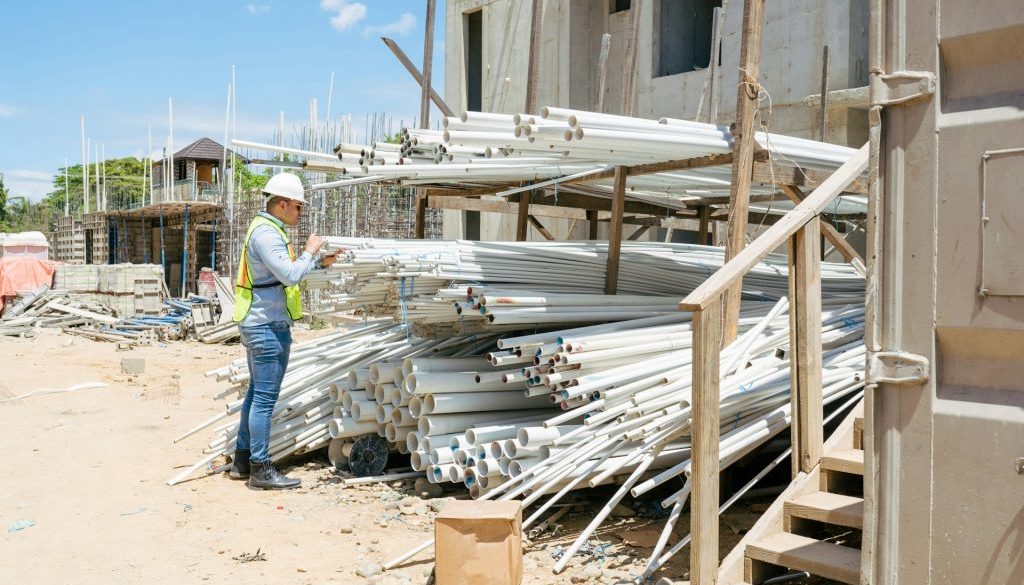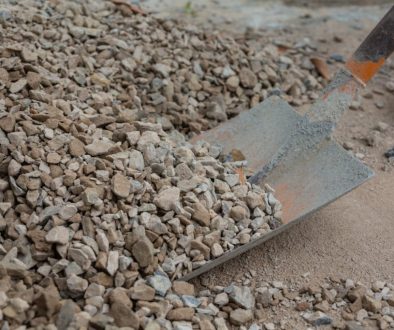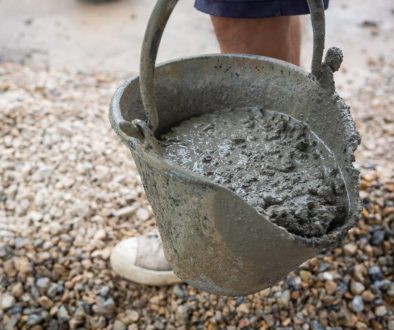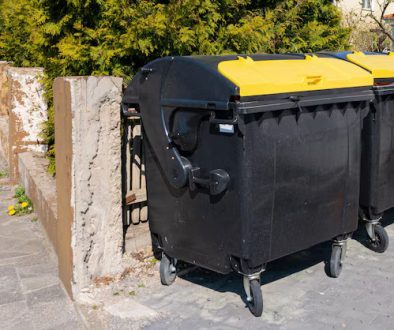When a building job wraps up, it’s not unusual to end up with loose MOT Type 1 left over. It often gets brushed to the side, seen as leftover rubble, but it can still be useful. Before you think about adding it to the rubbish pile, it’s worth knowing what you’re dealing with and how it can still come in handy.
Loose MOT Type 1 is a type of crushed stone that’s often used to build sturdy bases for driveways, footpaths and patios. It’s made to hold shape under pressure, which is why it’s poured as a foundation before any paving goes down. Once it’s loose and unused, it can seem like clutter. But if it’s dry and clean, it’s worth saving.
As we head into late autumn in Cheshire, we often face wet weather and softer ground. This is a good time to tidy up the site, figure out what materials can be reused and make a smart plan for the rest. MOT Type 1 is tough and versatile, and there are a handful of ways it can still play a role once the main work is done.
Know What You’re Dealing With
MOT Type 1 is made up of crushed stone and fine dust particles. It’s graded to form a solid, compact base when laid and pressed down properly. Because of its makeup, it locks together well and creates a strong layer under things like patios, driveways or shed bases.
When it’s loose, especially after a job that’s been exposed to rain, it doesn’t pack the same punch. The pieces may be scattered, and if it’s been trampled or mixed with soil, it can feel messy. Around this time of year, light rain and cool winds in Staffordshire can turn loose MOT Type 1 into sticky clumps or wash it into corners of a site.
Most leftover piles pop up because the job finishes with a bit more than needed. It’s usually better to overorder than fall short, especially with base materials. That said, when the job winds down, the clean-up starts and figuring out what to do with these remains becomes a smart move before winter hits.
Where Loose MOT Type 1 Can Be Reused
One of the easiest and most useful options is to reuse loose MOT Type 1 on the same site. If it’s dry, free of rubbish and hasn’t been mixed with mud or other rubble, it can still be used for practical touch-ups.
• Add a fresh layer to low points in gravel paths or driveways where dips have started to form
• Fill out thin or uneven spots under paving areas, readying them for new slabs when weather allows
• Reinforce edges near gates, sheds or bin areas where foot traffic causes soft patches
Late October is a smart time to do this kind of fix. The weather hasn’t quite turned to full winter, but the soil is already holding more water. A bit of added support in problem spots can save slipping later or prevent damage showing up after storms. Reusing the loose material now can also save time once spring jobs roll around.
Most of all, reusing what’s already been delivered is less hassle than ordering again. If it’s still in workable condition, keeping it moving means less mess and less waiting when the next phase of work starts.
If the leftover MOT Type 1 is dry and clean, it will be a lot easier to move, handle, and reuse. Piles that are kept separate from building rubbish or green waste are much easier to manage, especially if you plan to use them over the next few weeks rather than right away. Sometimes, smaller leftover bits are easy to repurpose in garden beds, along the edge of patio slabs, or in small landscaping projects, so have a quick look around for any other places where a bit of extra support is needed.
When It’s Better to Remove or Recycle It
There are times when using leftover MOT Type 1 just isn’t possible. If the pile has picked up too many bits of old concrete, waste or broken bricks, it can’t give the even base it’s meant to. It might seem like it’ll still work, but mixing poor material into a foundation only creates problems later.
Sometimes the material might be in the way, especially for smaller yards or driveways that need to stay clear. If it’s sat open to weather, the pile might have soaked through or washed out, leaving it clumpy or slimy under foot.
When reuse isn’t a good option, properly removing and recycling the material is the next step. That often means loading it into a proper skip for heavy materials. Waste stations around Cheshire often accept building aggregate, especially when it’s sorted and not mixed in with general rubbish.
According to the Enviro Skip Hire aggregates page, our MOT Type 1 is fully certified and regularly delivered to projects across Staffordshire and the wider region, so proper recycling or removal can be arranged as part of site clean-up if direct reuse is not practical.
Doing this keeps the job site cleaner, makes space for the next tasks and helps prevent heavy waste from damaging driveways or being left behind to sink in and cause drainage problems.
If you’re not sure if the leftover material is in good enough condition for reuse, take a closer look before loading it into a skip. If the pile is clearly mixed with bits of soil, bits of broken tarmac, or other rubbish, trying to filter it is usually more trouble than it’s worth. Instead, moving it offsite keeps things straightforward and tidy, especially if the job needs to be wrapped up before the weather changes for the worse.
Safe Storage Tips for Later Use
If you’re not ready to reuse it just yet but don’t want to waste it either, storing loose MOT Type 1 can be a practical option. The trick is keeping it in good condition through the colder, wetter months.
• Choose a dry, flat spot with drainage underneath. A concrete slab or paved area works best
• Lay a sheet or landscaping membrane beneath the pile to stop soil mixing in
• Cover the pile with a waterproof tarp or plastic sheet weighted at the corners to stop rain getting in
• Keep it well away from runoff paths where standing water gathers or where snowmelt may collect
With the weather cooling down and the ground getting softer, uncovered piles can settle fast and become harder to move. They can even become a slipping hazard or sink into the mud if they sit out too long.
If it’s stored well, that extra material might be just what’s needed come spring when new garden paths or outdoor repairs start up again. It saves time and takes one thing off the shopping list later.
A well-kept pile of MOT Type 1 can also help if winter weather leaves unexpected patches of mud or wear in driveways, paths or garden edges. Having some stored and ready means there’s less scrambling to find extra material on short notice, and it often makes a difference when quick fixes are needed during busy months.
Keep It Off the Rubbish Pile
Loose MOT Type 1 might look like waste at first, but its job isn’t done just because the main build is over. Whether it fills in an awkward dip in the drive, adds strength to a back garden walkway or gets swept up for future use, it still holds value.
By reusing it, storing what’s still solid, or responsibly shifting what’s not, we do more than just clear space. We save on effort down the line, reduce waste and prepare our outdoor areas to hold up better through wet weather. With autumn well under way, now’s the time to handle what’s left while the ground’s still firm.
When your Cheshire site is cleared but you still have piles of leftover material, we’re here to help you make the most of it. Whether you need to move, store, or properly remove aggregates such as loose MOT Type 1, we can support your next step with straightforward solutions. At Enviro Skip Hire, we’ve worked with many sites across Cheshire, especially during busy seasonal clean-ups, and we’re always ready to help you sort it out.




